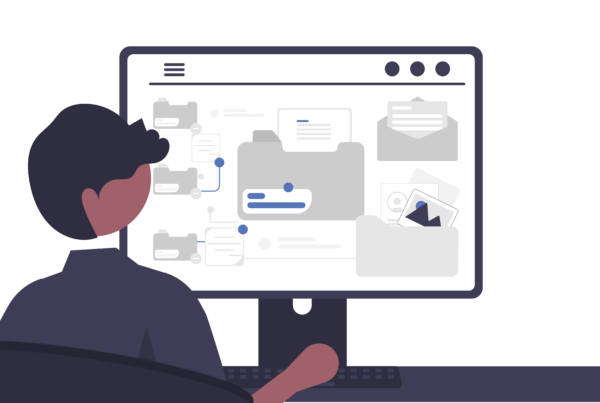
Did you know that having screen switch-off times can have a hugely positive impact on your family’s nutrition and sleep for starters, not to mention their mental health and balance? Getting your family to agree and help set No-Go Zones needs to be supplemented with No-Go Times, and this is why:
Nutrition
A Walden University study has concluded that the impact of screen time may be affecting the healthy eating habits of children and adolescents, making it more difficult than ever for them to maintain a healthy weight.
Back in 1985, a research study at Harvard University first identified a connection between TV watching and obesity in children and adolescents. Since then, multiple studies have corroborated Harvard’s findings, with evidence suggesting that exposure to screens leads to obesity in children and adolescents through increased eating while viewing, exposure to high-calorie, low-nutrient food and beverage marketing that influences children’s preferences and consumption habits, and reduced sleep duration (more on this below).
Experts all agree that excessive screen time on all digital media creates unhealthy nutritional habits in several ways:
- Eating while watching: Having breakfast, lunch, dinner, or just snacking whilst watching TV translates to eating without paying attention to the amount or the taste. Watching a screen blocks the feeling of satisfaction because your brain is focused on other things. So, kids have more inclination to eating fats and sugars, as well as just plain overeating.
- Lack of physical exercise: Time spent in front of a digital screen is usually sedentary. Need we say more?
- Fast-food cravings: TV programs aimed at children often feature commercials for unhealthy snacks, drinks, fast-food meals, and sugary breakfast foods. Just seeing the commercials can make children crave a snack even when they aren’t hungry, and we can guarantee they aren’t going to want a healthy snack!
- Pester power: Marketers understand that children have considerable purchase influence, and often get what they want simply by pestering or nagging their parents in supermarkets. Studies indicate that children begin using their “pester power” at the age of two. Their first requests are often for breakfast cereal, followed by snacks and beverages.
So, go ahead and make mealtimes one of your family’s switch-off times. Childhood is short, and one of life’s great pleasures is enjoying your meal with a family chat!
Sleep
We all know by now, that using a computer or phone before bed interferes with sleep, but how to explain it to our kids, and help them build good habits early on?
The human biological clock follows a 24-hour sleep-wake cycle. When the sun rises in the morning, your body produces cortisol, a hormone that makes you feel awake and alert. As daylight fades, the body releases another hormone, melatonin, that produces feelings of sleepiness.
Electronic back-lit devices like cell phones, tablets, gaming consoles, TV’s and computers, emit short-wavelength enriched light, also known as blue light, which has been shown to reduce or delay the natural production of melatonin in the evening and decrease feelings of sleepiness. Blue light can also reduce the amount of time you spend in slow-wave and rapid-eye-movement (REM) sleep, two stages of the sleep cycle that are vital for cognitive functioning.
The data from multiple studies have confirmed time and again, that using any device with a screen in the hours leading up to bedtime causes kids to sleep less and get poorer quality sleep. First, the content is too stimulating and wakes them up, especially if it’s video or mobile games. Second, the light emitted from mobile devices has some shocking effects on the body, including reducing melatonin, which can wreak havoc on kids’ circadian (sleep cycle) rhythms. Lastly, since so many kids have their own mobile devices that they can sneak into their rooms, many of them are staying up past bedtime to watch shows and play games.
The Sleep Foundation recommends a screen time cut off of 1 hour before bed but says there are even benefits to discontinuing it just 30 minutes before bed. For better sleep for your whole family, the tried and tested strategies you can rely on are:
- Decrease your daytime and night-time electronics use: Using electronic devices for long periods during the day can negatively impact sleep too, especially among adolescents.
- Establish a relaxing bedtime routine: The hour before bed should consist of relaxing activities that don’t involve devices with screens.
- Make your bedroom a screen-free zone: Remove all of your electronic devices from your bedroom – and encourage your kids to do the same.
- Keep the bedroom lights dim: Dimmer indoor lighting affects your melatonin production to a much lesser extent.
- Use night-time mode: Many cell phones, tablets, and other portable electronic devices are equipped with a “night-time mode” that is easier on the eyes before bed. You should manually dim the display if your device does not automatically adjust the brightness in night-time mode.
- Invest in some “blue blocker” glasses: These orange-tinted eyeglasses are specifically designed to shield your eyes from blue light emissions.
Childhood sleep deprivation is conclusively linked to higher rates of obesity, psychological problems, reduced cognitive functioning and increased risk-taking behaviours at later ages, according to the authors of that study. So, as tough as it can be to wrestle kids away from TVs, video games, phones and tablets, it really is necessary. Establishing some firm rules for your kids’ bedtime routines could have a seriously positive effect on their health. As well as yours!
Apart from physical play, nutrition and sleep are the two most important building blocks of a healthy brain and body. Implementing even one of the recommendations in this blog will bring lasting change into your child’s life and remember, it is never too late to make a change.
Be In Touch is a passionate team of family digital wellness activists, working with schools, parents, learners, NGOs, corporates and the government. Collecting real data on what kids are doing and experiencing online (including online exposure to cyberbullying, stranger contact, pornography, violence, self-harm, drugs & alcohol), they use this to pinpoint practical and implementable solutions. They aim to simplify the complicated world of family digital wellness and online safety, with practical resources, products and solutions that parents and children really need! Sign up for their newsletter and follow them on Facebook and Instagram for great tips that will help your whole family!



